Planning a trip to Montana and wondering, “What is Montana weather really like?” Well, let’s dive into a comprehensive Montana weather guide tailored specifically for travelers.
In this article, you’ll learn all about this beautiful state’s fascinating and ever-changing climate and why it’s essential for any traveler to be prepared.
From the scorching summers to the deep snows of winter, Montana’s weather is as diverse as its landscapes. You’ll want to be ready for anything Mother Nature throws your way.
So, what can you expect? Montana’s weather has a range of temperatures and can change dramatically within a single day, with daily temperature fluctuations of up to 50°F (10°C).
Before you embark on your Montana adventure, it’s crucial to check the weather report on the National Weather Service website, as the conditions can vary greatly between regions. Whether you’re a hiker, a skier, or a wildlife enthusiast, understanding Montana’s seasonal weather patterns will help you make the most of your trip.
- Related article: Montana Travel Insights
So, if you’re ready to make the most of your Montana adventure without being caught off guard by the elements, stick around.
7 Key Takeaways on Traveling in Montana’s Diverse Weather
- Summers offer longer days, warm temperatures, and occasional thunderstorms.
- Fall is a whimsical blend of Indian summer weeks, brisk rains, and even some early snow.
- Winters are freezing and snowy, and demand preparation for deep snow and icy roads.
- Spring is a mix of Pacific storms, a chance of snow, and rain, but with the benefit of fewer crowds.
- Montana’s weather can be highly variable, so pack layers and be flexible.
- Eastern Montana tends to be colder than the West during the fall months.
- Montana’s weather can change rapidly, so it’s essential to stay updated with forecasts.
Weather Essentials for Traveling in Montana
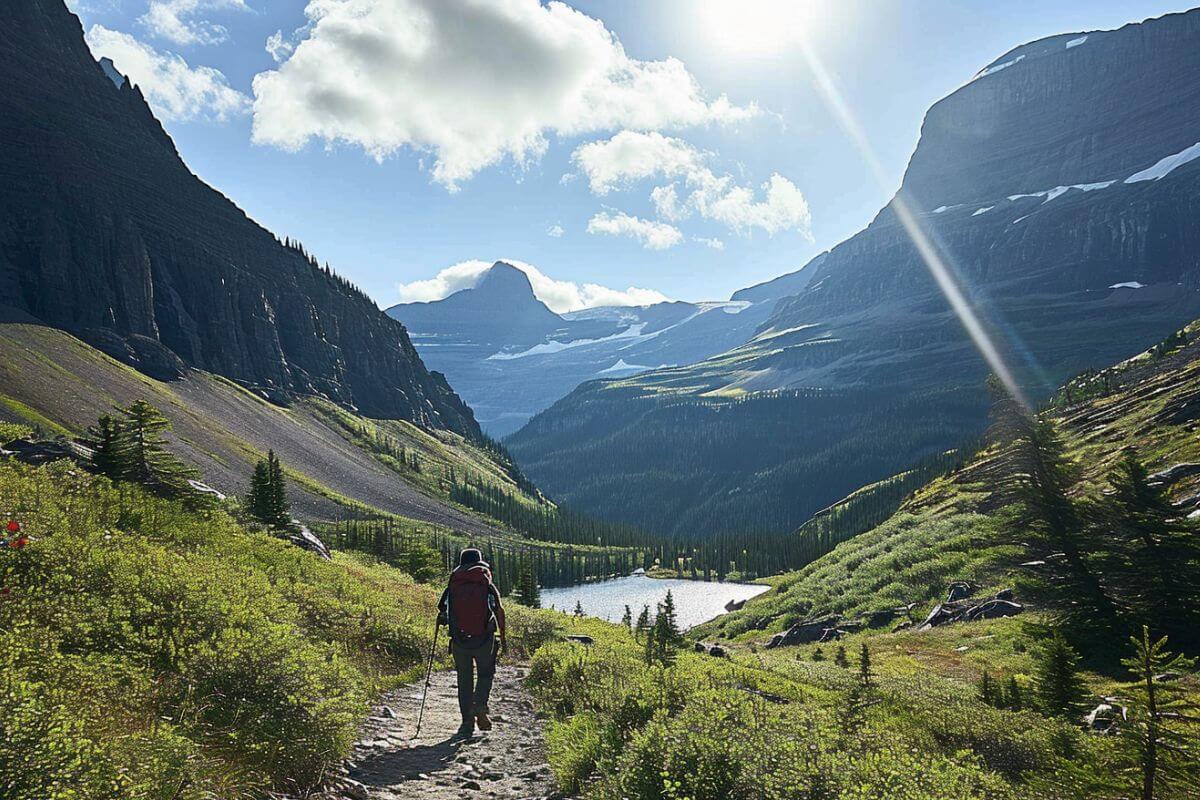
The weather in the Treasure State has a mind of its own, making it essential for travelers to be prepared for anything. Whether you’re planning a summer hike or a winter ski trip, you can stay one step ahead of Mother Nature.
In this guide, I’ll give you the lowdown on the essential weather information you need to know before you go, from seasonal variations to what to pack. Know valuable insights and tips to navigate the elements of this breathtaking state.
1. Summer in Montana
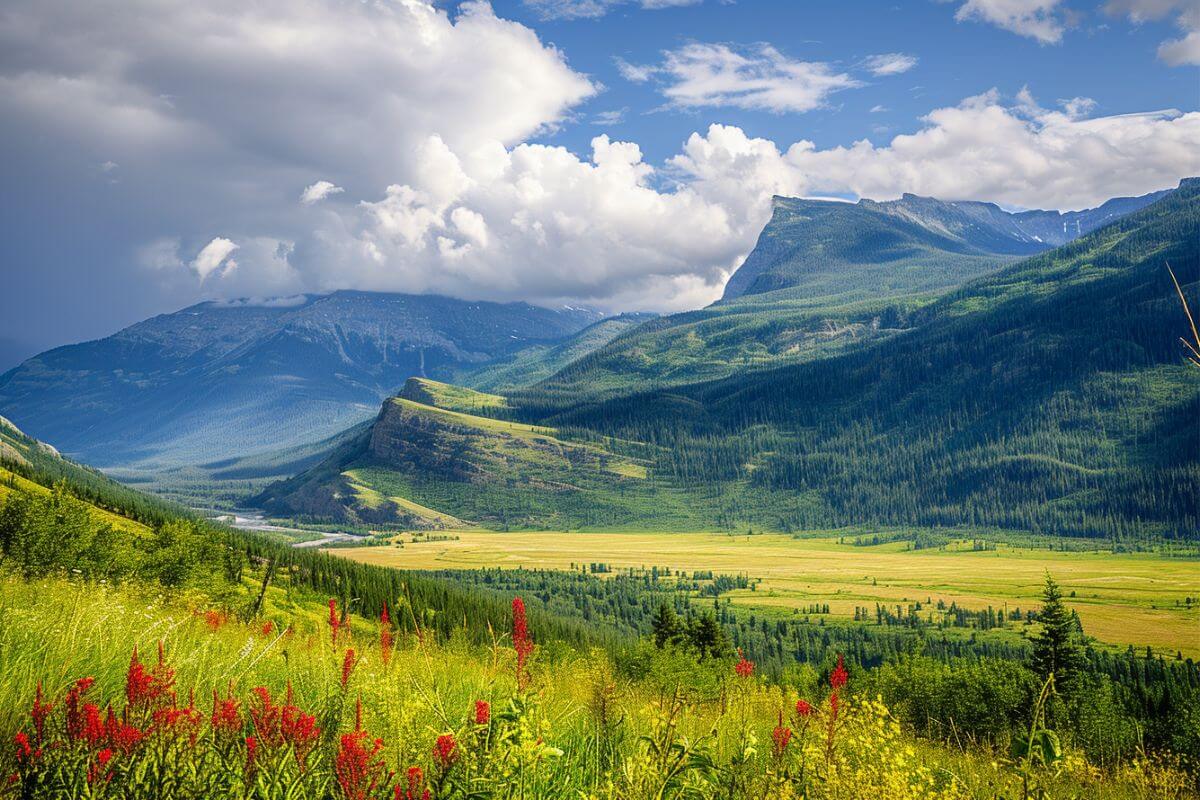
When summer graces Montana, it’s as if the state puts on its most vibrant dress. With its drier climate and abundance of sunshine, you can expect a summer that’s both inviting and exhilarating.
The key details about summer in Montana paint a picture of warmer temperatures, beautiful summer weather, and only a few days of clouds. You’ll find the summers to be short, warm, and mostly clear, making it the perfect time to explore the mountainous regions and national parks.
Summer season in Montana welcomes the most tourists, especially in Glacier and Yellowstone National Parks. The days are longer, offering you a generous 14 to 16 hours of daylight to explore the state’s treasures.
However, don’t be fooled by the generally pleasant weather; Montana summers are not without their occasional surprises. Thunderstorms are a common occurrence, bringing with them hail, lightning, and strong winds. These dry storms can be quite the spectacle, but they’re also the main culprits behind the state’s wildfires.
If you’re planning a summer visit, make sure to pack for the scorching weather in the afternoons and chilly evenings, as daytime temperatures can be quite warm, and night temperatures usually plummet.
The summer months in Montana are from July through early September, with the hottest month being July, when the statewide range is 64°F – 88°F (17°C – 31°C).
So, while your daytime adventures may require light clothing, don’t forget to bring a jacket for those starlit nights.
In a nutshell, summer in Montana is a time of adventure, with its longer days and more predictable weather. Just keep an eye on the sky, as a clear morning can sometimes give way to an afternoon thunderstorm.
- Read more about the Best Months to Travel to Montana
2. Fall in Montana

Fall in Montana is a rollercoaster of weather. When the vibrant hues of autumn paint the Montana landscape, you know it’s time to embrace the season’s delightful unpredictability.
In October, you can expect a medley of weather patterns. One week you might bask in the sun, and the next, you’ll be bundling up under cloudy skies with a chance of light rain or even some higher-elevation snow. Early winter storms sometimes make a grand entrance in late October, adding an extra layer of excitement.
As November rolls in, so does the chill. Temperatures drop, precipitation becomes more frequent, and cloud cover thickens. It’s as if nature is preparing Montana for the blanket of winter that lies ahead.
Here’s an interesting tidbit: Eastern Montana tends to experience colder weather compared to its Western counterpart during the fall months. So, if you’re planning to traverse the state, pack accordingly.
My advice? Layer up and be prepared for anything. Fall in Montana is a whimsical blend of weeks of Indian summer weather followed by brisk rains and, occasionally, a chance of snow. The weather can change on a dime, so flexibility is key.
Here are the main key points to note about the Fall weather in Montana:
- Fall usually kicks off in late September and can stretch its colorful tapestry well into November.
- Higher elevations are cooler and windier, so don’t forget that extra sweater.
- Expect highly variable weather: sunny and warm one day, overcast and chilly weather the next.
- Don’t be caught off guard by the chance of snow, especially as you move deeper into autumn.
To make the most of your fall journey through Montana, keep an eye on the forecast, but also be open to the unexpected. After all, it’s the surprises that often make for the most memorable travel experiences.
3. Winter in Montana
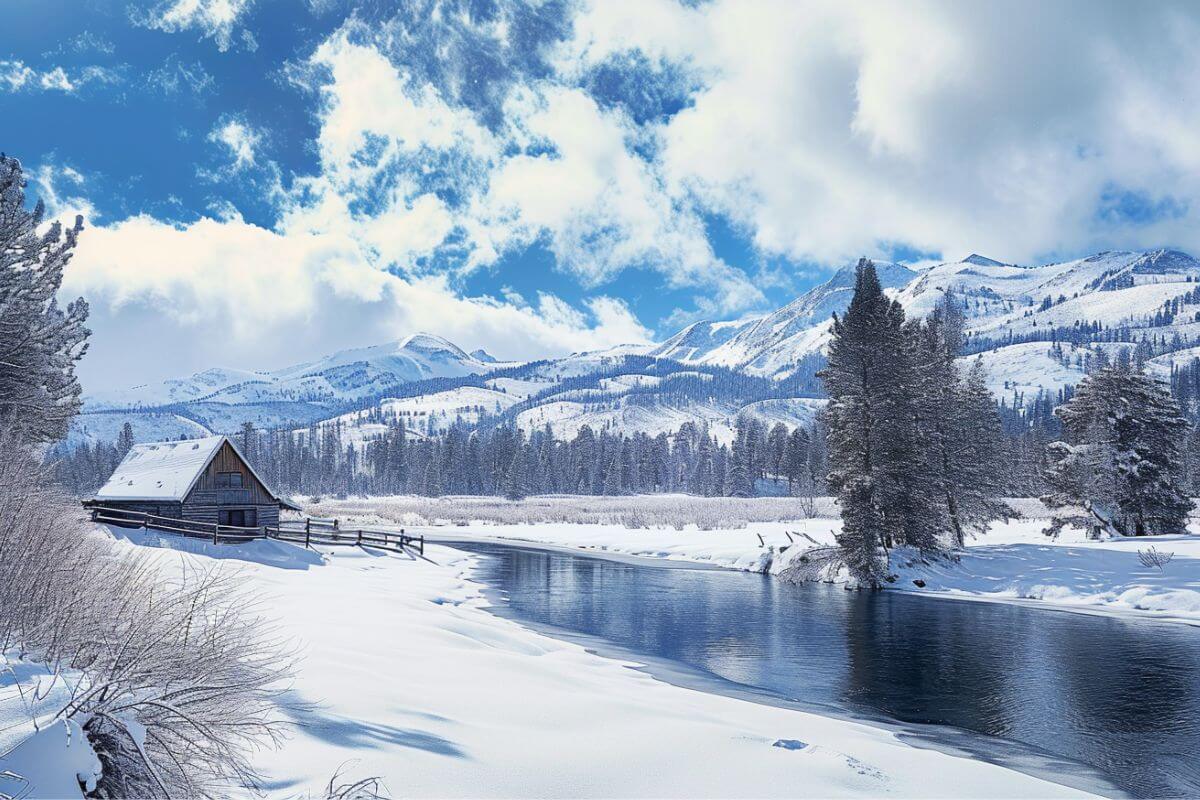
Winter in Montana is no joke; it’s a season that commands respect. Snow and wind storms are a regular occurrence, and the winters are freezing, snowy, and partly cloudy. Generally, Western Montana sees a lot more snow during the winter compared to the East.
The winter season in Montana typically spans from November through February, with December being the coldest month. The average winter temperature in the state is a teeth-chattering 20°F (-6.7°C), and the average annual snowfall is 400 inches of snow.
The cold season in the state can be both breathtaking and challenging. Embrace the chill and the thrill as the transition into frigid times can be gradual but can also be abrupt and hit you like a snowball to the face.
Here are some notable cold spots and records in Montana:
- Cooke City – Cooke City proudly claims the title of Montana’s coldest average temperature on a year-round basis.
- Westby – Westby takes the crown for the coldest average temperature during the winter.
- East Glacier – The record snowfall for one storm in the state is a jaw-dropping 77.5 inches, recorded at East Glacier.
- Rogers Pass – Montana holds the national record for cold, with a bone-chilling -70°F (-57°C) reading near Helena.
Winter in Big Sky Country is a season of extremes, be prepared for abundant snowfall, deep snow, icy roads, and the occasional bone-chilling cold snap.
So, why would you want to visit during these strong winters? For one, the landscapes transform into a winter wonderland, offering fantastic opportunities for skiing, snowboarding, and snowshoeing.
The lack of crowds compared to popular winter destinations is another plus. Just make sure to dress in layers, pack essential cold-weather gear, and keep an eye on weather forecasts on the National Weather Service website. With the right preparations, you’ll be rewarded with unforgettable experiences.
4. Spring in Montana
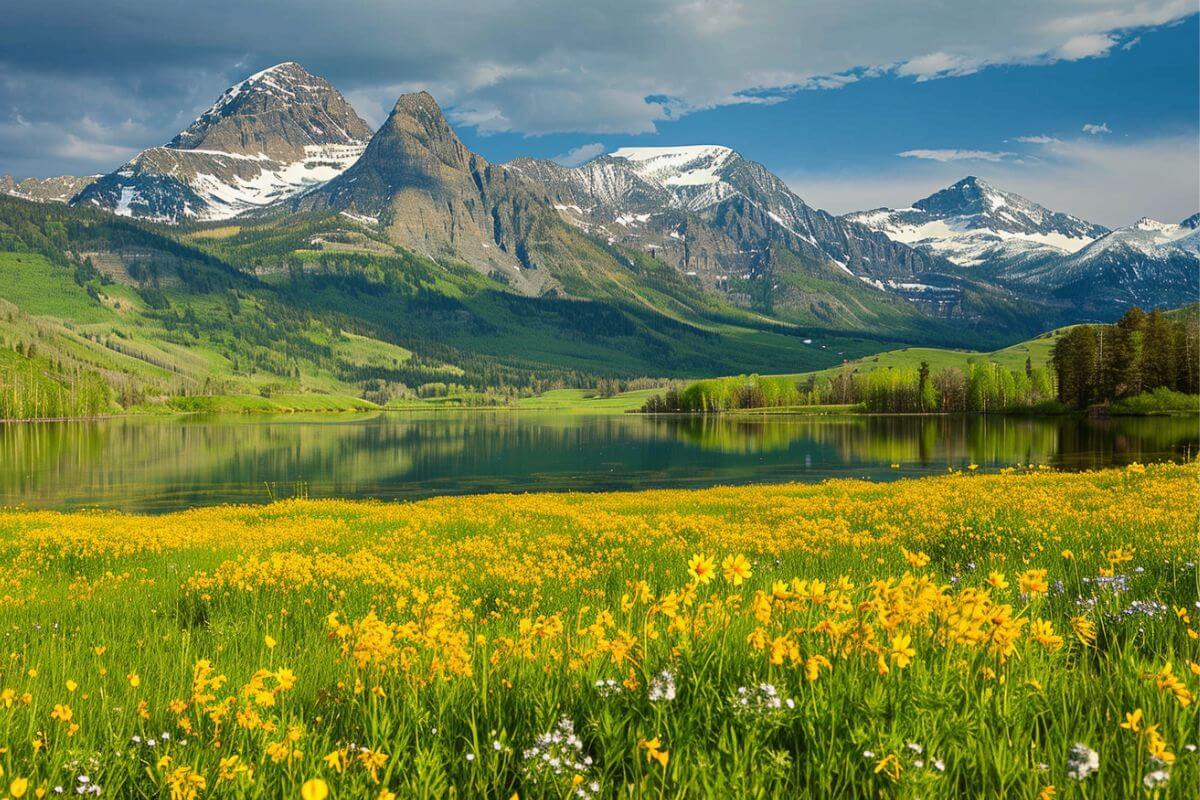
If you’re planning a trip to Montana between March and May, you’ll be experiencing the wonders of spring in Big Sky Country. Spring weather in Montana is a bit of a mixed bag, you could say.
Pacific storms can roll in, bringing unsettled weather for a few days at a time. These storms can be quite the adventure, offering dramatic skies and a chance to experience Montana’s wild side.
And don’t pack away your winter gear just yet. Snowfall is not uncommon during spring in Montana, especially in higher elevations. So, if you’re heading to Glacier National Park or any mountainous region, be ready for a mix of snow and sunshine.
Spring is Montana’s rainy season, and rainy days are a regular occurrence. Pack your rain gear and embrace the wet weather; it can add a mystical touch to your adventures.
The silver lining to spring’s moody weather is that you’ll encounter fewer crowds in popular tourist areas. You won’t have to jostle for a spot at the popular tourist attractions like you would in the summer months.
During my springtime excursions in Montana, I’ve experienced everything from warm, sunny days to long events of clouds and rain. This is due to the range of temperatures in the state that changes dramatically within a single day, with daily temperature fluctuations of up to 50°F (10°C).
The key is to pack layers, including a waterproof jacket, and be flexible with your plans. Montana’s spring weather can change on a dime, but that’s part of the magic.
So, if you’re the kind of traveler who enjoys a mix of sunshine, rain, and maybe even a touch of snow, spring in Montana is your season.
Montana Travelers’ Weather Guide Final Thoughts
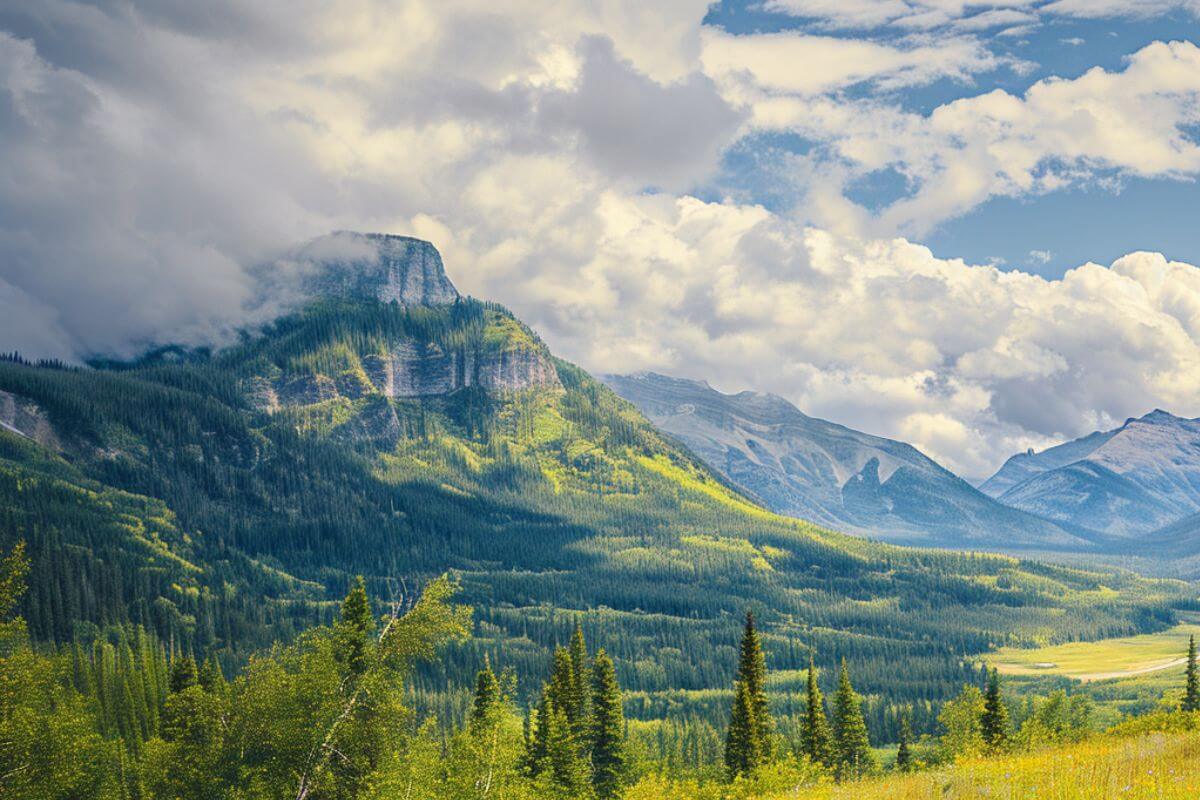
As a Montana traveler, you can expect a wide range of weather conditions throughout the year. From the scorching hot summers to the frigid winters, the state’s weather can be unpredictable and ever-changing.
It’s important to pack for all possibilities and be prepared for sudden shifts in temperature and precipitation. From the inviting summers to the whimsical autumns, the demanding yet beautiful winters, and the unpredictable springs, each season has its charm and challenges.
The key to a successful Big Sky Country adventure lies in preparation and flexibility. Keep an eye on the forecast, layer your clothing, and be ready for anything Mother Nature throws your way.
Montana’s diverse and stunning landscapes are worth braving the elements for, so embrace the weather and enjoy all this beautiful state has to offer. Just remember, in this vast and ever-changing state, it’s not just about where you go but when you go.
Montana Weather Guide FAQs
1. What Is Montana Weather Like Year Round?
Montana’s weather is a wild, unpredictable ride through the seasons. Winters are icy and snow-clad, painting the landscape a sparkling white.
Summer sees a mix of dry weather conditions and wet spells, with warm temperatures that beckon you outside to explore. The climate here is nothing if not diverse, offering a little bit of everything, no matter the time of year.
2. Does Montana Have All 4 Seasons?
Montana offers a rich and diverse display of the four seasons, each with its unique allure and activities.
The state experiences a cold and snowy winter, a blossoming and mild spring, a warm and dry summer conducive to outdoor activities, and a crisp and colorful autumn marked by falling leaves.
3. Is Montana Better in Winter or Summer?
Whether Montana is better in winter or summer depends on personal preference. Winter is ideal for snow sports and serene snowscapes, while the gorgeous summer weather offers a plethora of outdoor activities.
4. What Part of Montana Has the Best Weather?
If by “best weather” you mean sunny skies, then Billings, Montana, is the place to be, as it boasts the warmest average winter temperature in the state, as well as the warmest mean temperature for the year. Learn more about the warmest parts of Montana.
5. Is Montana the Coldest State?
With an average temperature of 42.6°F (5.9°C), Montana is the sixth-coldest state in the U.S. The state’s reputation for cold weather is well-deserved, with its long, harsh winters often dominating the landscape for months on end.
Eager to delve deeper into the wonders of Montana? Check out these eye-opening reads:

